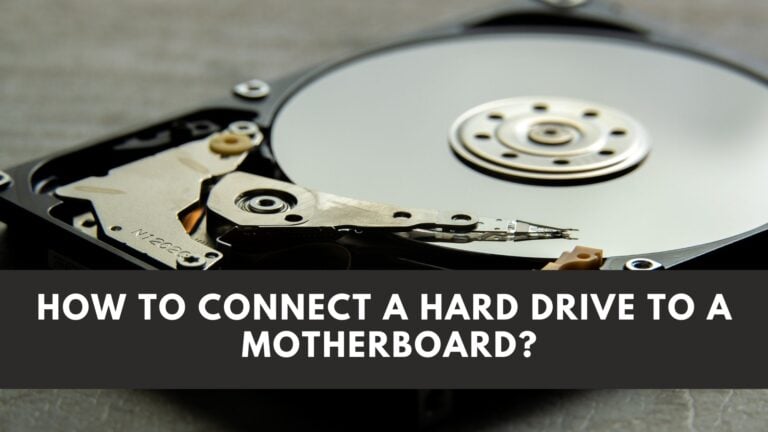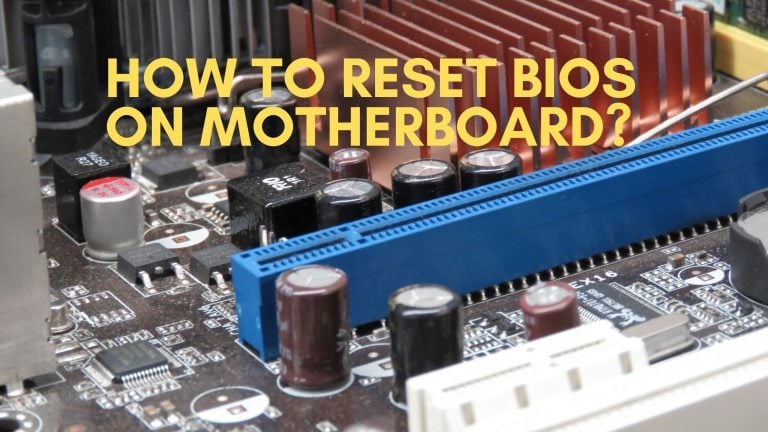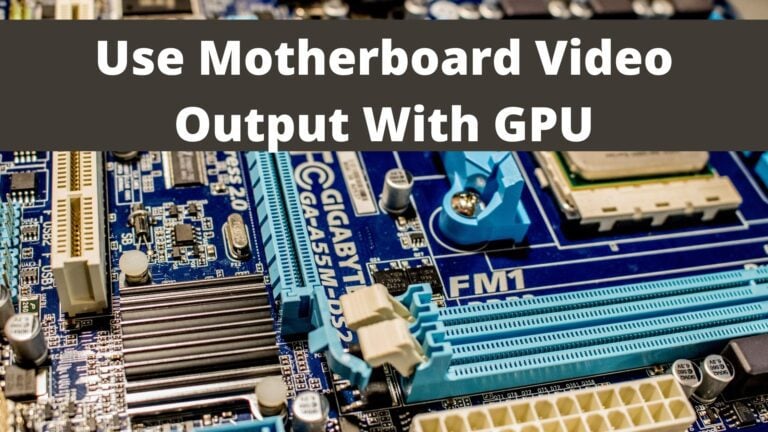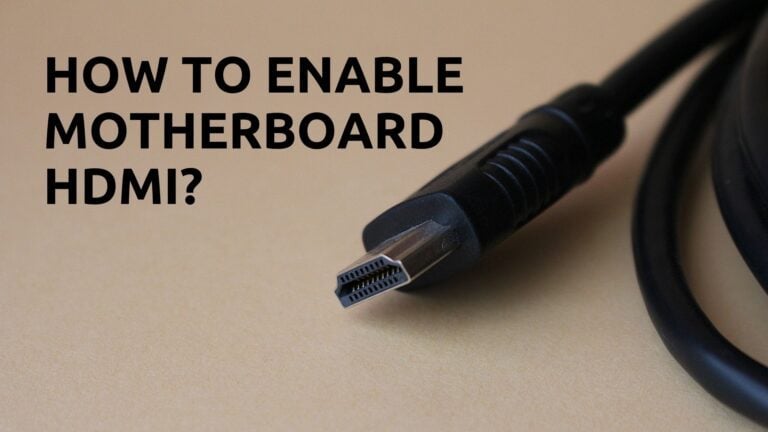Can I Install DDR5 RAM on a DDR4 Motherboard?

For many years, several businesses have been working on new DRAM components. Micron Technology, Samsung, and SK Hynix are among these firms, while other companies have expressed interest in DDR5 DRAM technology. However, it is unclear when DDR5 will become a common product.
What is DDR5?
JEDEC developed DDR5, the most recent standard or technology that specifies a type of memory module. The key advantage of DDR5 is that it offers faster data rates and more power efficiency, which will result in better performance when gaming or working with high-intensity applications like virtual reality.
Other advancements, such as the improved data rate of the DDR5, may be useful to those seeking to get more performance from integrated graphics on compatible CPUs. However, consider that DDR4’s capacity constraints will remain long after new programs force high-end manufacturers to seek alternate options. DDR5 is still in its infancy, yet it is the future.
Check Samsung TV Motherboard Replacement Cost
How different is DDR5 compared to DDR4?
DDR5 does not have backward compatibility with DDR4. It’s a new standard when the underlying memory technology changes, even if it’s only by a single digit (in this example, five versus 4). The pinout will be different, the voltages will most likely change, and you won’t want to mix them up if possible.
On the other hand, Incompatibilities aren’t only for the sake of being unpleasant. They are required since we would not have quicker RAM while consuming less power if they were backward compatible.
Furthermore, RAM difficulties were resolved when memory controllers were not integrated into the CPU. If you wanted to use it with an old CPU and a new motherboard back then, you would have to install extra memory controllers to your motherboard to allow for it to handle the new RAM technology.
Of course, the manufacturer profits since it allows them to sell more motherboards and RAM. However, this is a byproduct rather than the basis for its existence.
Can you plug in DDR5 RAM on a DDR4 motherboard?
DDR5 RAM is the most modern memory technology available on the market. On the market today, only a few laptops and desktops feature a DDR5 RAM slot on the motherboard. You’re probably wondering how to boost system performance, and the easiest solution is to update your RAM.
DDR5 RAM is the most recent memory available, and you’re wondering if it’s compatible with your old DDR4 RAM-based Motherboard. Then the answer will be a simple no.
Motherboards can only support either DDR3, DDR4, or DDR5 memory technologies. DDR5 RAM can only be used if your motherboard has a DDR5 RAM slot. As a result, DDR5 RAM and DDR4 slot motherboards are incompatible. And for this incompatibility, there are several reasons.
Check When to upgrade your Motherboard?
However, DDR5 is gradually becoming more popular, and Intel just introduced its Alder Lake CPU family, which includes CPUs that are completely compatible with DDR5 RAM technology.

Incompatibility Reasons:
1) Operation Voltage:
The operating voltages of DDR4 and DDR5 vary. The operating voltage of DDR4 RAM is 1.2V, whereas that of DDR5 RAM is 1.1V. Consequently, the power supply for DDR4 slots on motherboards should be 1.2V, and if it is physically feasible to connect DDR5 RAM in DDR4 slots, your DDR5 RAM may be destroyed as a result of a 0.1V voltage excess provided to it.
2)Physical Structure:
DDR4 and DDR5 “Key Notch” locations differ significantly and do not line up. On DDR5 modules, it is somewhat to the left, and notches are given in several spots to prevent incorrect installation. As a result, the sockets for DDR4 RAM and DDR5 RAM are unique. As a result, we cannot install DDR5 RAM in a DDR4 Socket, and conversely.
However, the number of pins for DDR4 and DDR5 RAM is 288. Though the pin counts are the same, the command and address buses of DDR5 RAM are reduced and partitioned differently. As a result, DDR5 RAM required a DDR5 motherboard, whereas DDR4 RAM required a DDR4 compatible motherboard.
Check Will A Motherboard POST Without CPU?
Older DDR4 sticks have a single-channel design with a 72-bit bus, 64 data bits, and eight error-correcting code (ECC) bits. DDR5 features two 40-bit bus channels with 32 data bits and eight ECC bits.
3)Memory Bandwidth:
Memory bandwidth is the rate at which data may be read from or written to a memory stick. DDR5 RAM is believed to have double the frequency of DDR4 RAM. DDR4 memory can support up to 3.2 gigabits per second per pin. DDR5 can provide up to 6.4 Gigabits per second per pin.
DDR4 RAM runs at frequencies ranging from 1600MHz to 3200MHz (not overclocked), whereas DDR5 memory operates at speeds ranging from 3200Mhz to 6400Mhz. As a result, the CPU and motherboard must be configured so that DDR5 frequencies may be supported.
Micron reported a 36% improvement in bandwidth using a DDR5 module vs. a DDR4 module at the same data transfer rate of 3200 MT/s. A DDR5/4800 module tested by Micron would outperform a comparable DDR4/3200 module by 87 percent.
4)Power Management:
According to sources, DDR5 RAM voltage regulation components have been relocated from the motherboard to the individual RAM stick, making each DIMM accountable for its voltage control. As a result, each DIMM should now be equipped with its voltage regulator circuit.
DDR5 RAM is incompatible with DDR4 Sockets (even if DDR5 RAM fits in DDR4 Socket). So, the current DDR4 Sockets are incompatible with DDR5 RAM. This is why the motherboard and CPU socket must be suitably built.
If you love diving into the details, the power supply is the significant difference between DDR5 and DDR4. Today, the motherboard of a PC handles all power management for DDR4 memory. DDR5 RAM sticks, on the other hand, contain their regulator known as an integrated power management chip (PMIC).
Check Orange light on ASUS Motherboard
DDR5 is much faster than DDR4:
DDR4 RAM, which is now found in all gaming PCs, was originally released in the second quarter of 2014, with the earliest accessible modules operating at a meager 1600MHz (DDR4-1600). Standards finally supported DDR-3200 modules, and manufacturers have subsequently marketed overclocked modules that can attain 4000MHz or 4133MHz out of the box.
However, while DDR4 RAM has significantly improved during its lifespan and exceptional overclockers have pushed the technology even further, DDR5 represents a significant increase in speed and bandwidth. The initial DDR5 RAM sticks for the general market operate at 4800MHz, with 5200MHz and 6000MHz modules available at a premium.
Reviewers have already discovered DDR5’s greater speeds above DDR4 to translate to increased performance in games and some programs. Performance benefits should be much more obvious in 2022 and beyond, particularly if manufacturers begin producing lower-latency DDR5 modules.
How much does RAM affect performance?
RAM has traditionally been at the bottom of that list for components for a new gaming setup. However, a minimum level of RAM capacity is required, particularly if you want to create a PC that can be used for video editing and other professional duties. The benefits of more costly RAM are sometimes underestimated compared to investing more money in a superior GPU.
Nonetheless, greater RAM might result in considerable improvements in Frames Per Second (FPS), for example, when playing games. RAM boosts might be more noticeable while playing games at 1080p resolution. The higher the game’s resolution, over 1080p, the more it becomes GPU bound rather than CPU bound.
As a result, 1080p gaming is increasingly dependent on CPU performance, and increasing both memory speed and capacity helps CPU performance; but, as the resolution increases, the benefits reduce.
Similarly, certain gaming titles, such as Microsoft Flight Simulator and Kerbal Space Programme, which need advanced physics simulations, or massive persistent world titles, rely more on CPU speed. FPS performance in these games may be significantly increased by boosting your RAM, which reduces bottlenecks in your CPU’s performance.
According to the same principle, “onboard graphics,” such as AMD’s AMU, uses onboard RAM as VRAM; therefore, upgrading RAM may assist your ordinary laptop user more.
Does DDR5 RAM cost more?
According to PCMag, a similar Team Group bundle of 32GB DDR4 modules costs $150 and $180. At Newegg and B&H Photo, we found equally significant markups on the initial wave of DDR5/4800 and DDR5/5200 RAM released alongside Intel’s Alder Lake CPUs.
A few 16GB kits are priced around $150, while most early DDR5 memory kits come in larger 32GB quantities for closer to $300. So, certainly, early DDR5 adopters will have to pay a big penny. But keep in mind that this has always been the case with new memory transitions. Shiny new products are nearly always more expensive at first.
Does DDR5 RAM generate more heat?
DDR5 adds heat to the mix because of its increased bandwidth and capacity, although this isn’t always due to the chips themselves operating hotter. Voltage control for RAM will be moved directly into the module with DDR5.
The voltage for the RAM in DDR4 is located on the motherboard. In principle, this should minimize the motherboard’s complexity and offer individual module manufacturers more control over and the ability to optimize the power supply for each module.
The cost is the increased heat generated on the module itself, which must be dispersed. Corsair, for example, is already advertising its current cooling architecture as a DDR5 advantage.
Is DDR5 more future-proof?
This is a difficult topic to answer, but generally speaking, paying a premium price for new technology is “future proof” rarely pays rewards. DDR5 is anticipated to be quite costly in October 2021 compared to DDR4, so it’s usually wiser to wait for prices to equalize before investing—but much of this relies on what you value.
It also depends on how you see your RAM investment. Paying a premium for DDR5 in 2021 or early 2022 implies you can utilize the RAM in a new system in 2026 (where you’d have to discard the DDR4). However, it is usually preferable to switch to a new memory standard a few years after it is released, when the RAM will be larger, quicker, and a whole lot cheaper.
Conclusion:
So, in short, the answer is no. This is because the coming generation of RAM has never been backward compatible with previous generations.
It’s similar to DDR4 when it transitions from DDR3, and it’ll necessitate a new memory controller designed for DDR5. Because memory controllers are integrated into CPUs, a new generation of CPUs is also required.
While the benefits of DDR5 are fantastic, the fact is that we will not see PCs starting to use these benefits until this time next year, and even then, it is doubtful that CPUs will be able to harness the potential of DDR5 until beyond 2022 completely.
DDR4 was launched in 2014, and we still see some gaming computers running DDR3 to this day, albeit it is becoming increasingly obsolete.
We didn’t notice much of a difference in performance between DDR4 and its predecessor when it was first launched, and this remained true for several years. Similarly, DDR5 is unlikely to be widely used in most PCs until early 2022, and we can anticipate DDR4 to continue to dominate the market until then.
If you wind up purchasing a DDR5 compatible Intel or AMD CPU when released in 2021, DDR5 RAM may be worth it. However, it is hard to determine what the performance difference will be at this point.
If you want to keep your current CPU or buy one of the new Ryzen 5000 series, upgrading to DDR5 isn’t worth the effort until you decide to upgrade your PC with DDR5 compatible components.






